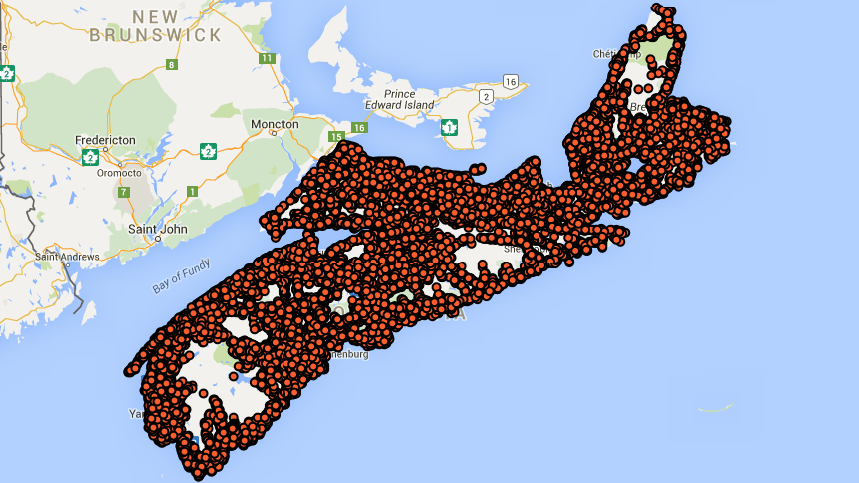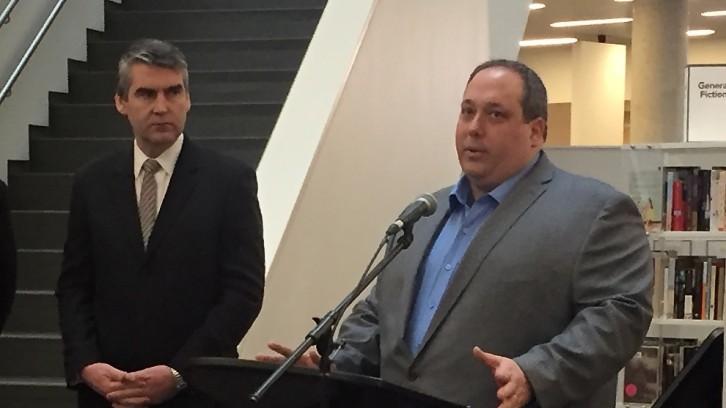Transparency
Province launches open data portal
Portal features a catalogue of 137 datasets from civic addresses to unclaimed estate funds

caption
Premier Stephen McNeil says government data belongs to the people.
caption
Premier Stephen McNeil says government data belongs to the people.Whatever happened to your great aunt Eunice?
If you can prove you’re her rightful heir, there may be a tidy sum waiting.
The province just released a dataset of $3.9 million in unclaimed intestate funds. Related stories
The information is part of a catalogue of 137 datasets released as part of the new provincial Open Data Portal.
All of the available data are non-sensitive and may be used for free worldwide, including for commercial purposes.
“By making government data available online, the public will have easier access to data that they can use to understand their government,” said Premier Stephen McNeil at the portal’s launch on Friday.
The website is one of more than 300 government open data portals around the world.
“We want to draw on the collective knowledge and innovation of the people of Nova Scotia,” said McNeil from the atrium of the Halifax Central Library. “Government data belongs to the people.”

caption
The open data portal features interactive maps. Pictured above are registered physical addresses which have been assigned a civic number.The Halifax Regional Municipality has operated a similar portal since October 2014. It features open datasets on crime, polling districts and they have just released a dataset showing thousands of spot elevations throughout the municipality.
Charts, maps and datasets
The information can be explored through maps, graphs or spreadsheets, and may be downloaded or viewed in the web portal.
The most accessed datasets are the civic address file (pictured above), the map of provincial Crown land and the map of Nova Scotia’s watersheds.
But the catalogue also includes information about government business such as absenteeism in the public service (see below) and awarded public tenders.
The Open Data Portal details each instance of provincial employee absence from work for the last fiscal year. Source: Open Government Licence – Nova Scotia.
New resource for developers
After his announcement of the portal’s launch, Premier Stephen McNeil introduced Bill Wilson, an app developer who runs Mindsea.
“Opening up data that was paid for with public dollars lets other people engage with it,” said Wilson.
He was pleased when he logged onto the website.
“I really was impressed by the interface they’ve put on it,” he said. “If you’re used to using any kind of Office application like Excel, you’re going to feel at home.”

caption
The premier, left, introduced software developer Bill Wilson who uses open data to create apps.Wilson developed an app using open data that combines the capabilities of smartphones with the transit data made available through government portals.
“In cities that support it, we also have real time data: if we know where the bus is, we will show it to you. You’ll know exactly when the bus is coming.” he says.
The province’s web portal does not offer real time datasets but officials will update the available data on a regular basis.
For Wilson, the availability of provincial data is more than just fodder for his apps, it’s a welcome step toward greater transparency in government and citizen engagement.
“For people who say ‘government should be doing all the work’, I say: ‘No, let private citizens and businesses do what they want with the data,’” said Wilson. “And let that inform government decisions.”

